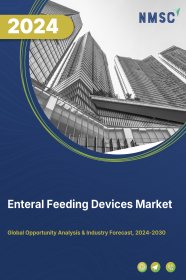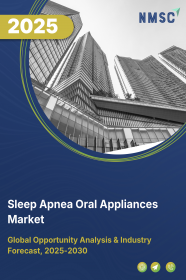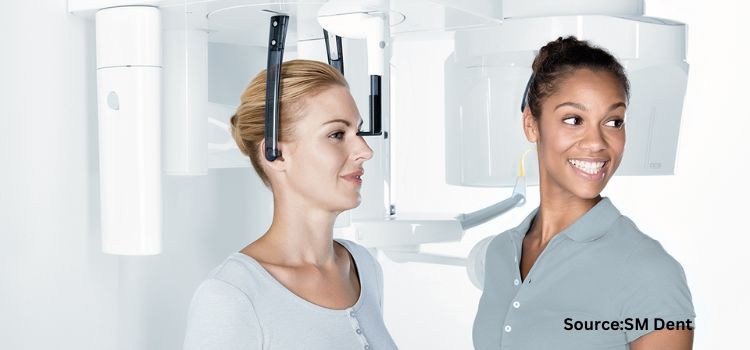
Enteral Feeding Devices Market by Type (Enteral Feeding Pumps, Enteral Feeding Tubes, Enteral Syringes, Giving Sets, and Consumables), by Age Group (Adult and Pediatrics), by Application (Oncology, Neurology, Malnutrition, Chronic Kidney Diseases, Diabetes, Gastroenterology and Other), and by End-Users (Hospitals, Ambulatory Care Services, Home Care and Other) - Global Opportunity Analysis and Industry Forecast 2022-2030
US Tariff Impact on Enteral Feeding Devices Market
Trump Tariffs Are Reshaping Global Business
Market Definition
The global Enteral Feeding Devices Market size was valued at USD 3.28 billion in 2021 and is predicted to reach USD 5.25 billion by 2030 with a CAGR of 5.4% from 2022-2030. Enteral feeding devices deliver the medication or nutritionally complete food directly to the patient’s gastrointestinal (GI) tract. This procedure supplements oral feeding and performs adequate GI function to enable the patent’s digestion & absorption. These devices have revolutionized the clinical nutrition industry as it alleviates the issue of nutrition discrepancy in diagnosed patients. Besides, feeding devices finds extensive applications in operation theatres, intensive care unit, critical care unit as well as in home-care settings.
Market Dynamics and Trends
The demand for enteral feeding devices is increasing owing to the increasing cases of premature births caused by drugs or alcohol consumption, preeclampsia, and issues with women’s uterus or cervix globally. In addition, a rapid rise in chronic diseases including malnutrition, diabetes, gastroenterology, & neurological disorders and improvements in healthcare facilities in developing nations boost the enteral feeding devices market growth. Growing inclination toward enteral nutrition from parenteral techniques due to the low cost of enteral nutrition with lesser side effects further surges the global market revenue.
Owing to COVID-19 outbreak, critical care medical devices witnessed a high demand as the rate of hospitalization increased considerably, thereby surging the usage of these devices to offer nutritional support in critically ill COVID patients. With rise in COVID-19 cases, more patients accessed home healthcare services such as home-based enteral nutrition. Therefore, emergence of COVID-19 positively impacted the market by opening new opportunities for home healthcare sector as well.
Continuous technological advancements in this field and new launches also boost the growth of the enteral feeding devices market. For instance, in February 2022, Amsino Medical Group received FDA approval for the PuggleEnteral Feeding Pump and Set that is intended to deliver nutrition to geriatric & pediatrics. However, the risk of complications such as diarrhea, vomiting, and abdominal distention while feeding results in additional healthcare costs restrain the adoption of these devices. Insufficient reimbursements for enteral feeding in developing countries pose a significant challenge to the uptake of these products.
In addition, subsequent reimbursement cuts for home healthcare services is expected to affect the market growth. Whereas, companies are leveraging the power of electromagnetic technology to create personalized patient body maps. This further allows healthcare professionals to precisely place the feeding tube in the GI tract. Such advancements are expected to create ample growth opportunities in the coming years.
Market Segmentations and Scope of the Study
The enteral feeding devices market share is segmented on the basis of type, age group, application, end-users and geography. On the basis of type, the market is divided into enteral feeding pumps, enteral feeding tubes, enteral syringes, giving sets, and consumables. Based on age group, the market is bifurcated into adult and pediatrics.
On the basis of application, the market is segmented into oncology, neurology, malnutrition, chronic kidney diseases, diabetes, gastroenterology and other applications. By end-users, the market is segmented into hospitals, ambulatory care services, home care and others. Geographic breakdown and analysis of each of the aforesaid segments include regions comprising of North America, Europe, Asia-Pacific, and RoW.
Geographical Analysis
North America holds the maximum share in terms of revenue in the enteral feeding devices market, and is expected to continue its dominance during the forecast period. Presence of a large geriatric population affected by several chronic disorders and number of surgical procedures using these products to support the nutritional requirements results in the largest regional share. For instance, in 2021, ~10,127 liver transplants were performed in the U.S., which, increased demand for enteral devices.
Also, the presence of prominent players such as Cardinal Health, Becton Dickinson, Boston Scientific & many more, and their engagement in several strategic initiatives further drive revenue generation. For instance, in May 2022, Cardinal Health shifted its focus to advanced ENFit enteral feeding connectors to reduce risk and improves safety for tube-fed patients.
Conversely, Asia-Pacific is expected to show a steady rise owing to the growing healthcare infrastructure, low manufacturing costs, and availability of cheap labor. Moreover, high cases of diabetes, malnutrition, preterm births, and COVID-19 demand the high adoption of enteral nutrition. According to an article published by The Lancet Global Health, every year there are over 1 million preterm births in China. Such a huge patient load surges the uptake of these products.
Competitive Landscape
The enteral feeding devices industry is fragmented with the presence of several key players such as Baxter International, B. Braun Melsungen AG, Boston Scientific Corporation, ConMed Corporation, Cardinal Health, Becton Dickinson and Company, Cook Medical, Moog Inc., Vygon SA and Fresenius SE & Co. KGaA. These market players are adopting various joint venture strategies and planning expansion of business across various regions to maintain their dominance in the market.
For instance, in July 2020, Baxter International signed an agreement with VIPUN Medical to market the VIPUN gastric monitoring system. This framework delivers a smart enteral feeding tube that assesses stomach motility in order to support the healthcare professionals to identify enteral feeding intolerance and offer better nutrition treatment choices.
Key Benefits
-
The enteral feeding devices market report provides a quantitative analysis of the current market alomgside the estimations from 2022 to 2030. This analysis assists in identifying the prevailing market opportunities to capitalize on.
-
The study comprises of an extensive analysis of the current and future enteral feeding devices market trends, depicting the prevalent investment pockets in the industry.
-
The information related to key drivers, restraints, and opportunities, and their impact on the enteral feeding devices market is provided in the report.
-
The competitive analysis of the market players along with their market share in the enteral feeding devices industry, is mentioned.
-
The SWOT analysis and Porter’s Five Forces model are elaborated on in the study.
-
The value chain analysis in the market study provides a clear picture of the stakeholders’ roles.
Enteral Feeding Devices Market Key Segments
By Type
-
Enteral Feeding Pumps
-
Enteral Feeding Tubes
-
Enterostomy Feeding Tubes
-
Percutaneous Endoscopic Jejunostomy Tubes
-
Gastrostomy Feeding Tubes
-
Balloon Gastrostomy Tubes
-
Percutaneous Endoscopic Gastrostomy Feeding Tubes
-
Low Profile Balloon Gastrostomy Tubes
-
-
Percutaneous Radiological Gastrostomy & Jejunostomy Tubes
-
-
Oroenteric Feeding Tubes
-
Nasoenteric Feeding Tubes
-
Nasojejunal Feeding Tubes
-
Nasogastric Feeding Tubes
-
Nasoduodenal Feeding Tubes
-
-
-
Enteral Syringes
-
Giving Sets
-
Consumables
By Age Group
-
Adult
-
Pediatrics
By Appication
-
Oncology
-
Liver Cancer
-
Pancreatic Cancer
-
Head & Neck Cancer
-
Esophageal Cancer
-
Stomach & Gastrointestinal Cancer
-
-
Neurology
-
Malnutrition
-
Chronic Kidney Diseases
-
Diabetes
-
Gastroenterology
-
Other
By End-Users
-
Hospitals
-
Ambulatory Care Services
-
Home Care
-
Other
By Geography
-
North America
-
U.S.
-
Canada
-
Mexico
-
-
Europe
-
UK
-
Germany
-
France
-
Italy
-
Spain
-
Rest of Europe
-
-
Asia-Pacific
-
China
-
India
-
Japan
-
South Korea
-
Australia
-
Rest of Asia-Pacific
-
-
RoW
-
UAE
-
Saudi Arabia
-
South Africa
-
Brazil
-
Remaining Countries
-
Key Players:
-
Cook Medical
-
Baxter International Inc.
-
Moog Inc.
-
B. Braun SE
-
Boston Scientific Corporation
-
ConMed Corporation
-
Cardinal Health
-
Becton, Dickinson and Company
-
Fresenius SE & Co. KGaA
-
Vygon SA
REPORT SCOPE AND SEGMENTATION:
|
Parameters |
Details |
|
Market Size in 2021 |
USD 3.28 Billion |
|
Revenue Forecast in 2030 |
USD 5.25 Billion |
|
Growth Rate |
CAGR of 5.4% from 2022 to 2030 |
|
Analysis Period |
2021–2030 |
|
Base Year Considered |
2021 |
|
Forecast Period |
2022–2030 |
|
Market Size Estimation |
Billion (USD) |
|
Growth Factors |
Increasing consumption of vitamins by aging population. Deficiency of vitamins among the growing population drives the market. Growing online pharmacies. |
|
Countries Covered |
20 |
|
Companies Profiled |
10 |
|
Market Share |
Available for 10 companies |
|
Customization Scope |
Free customization (equivalent to up to 80 working hours of analysts) after purchase. Addition or alteration to country, regional, and segment scope. |
|
Pricing and Purchase Options |
Avail customized purchase options to meet your exact research needs. |

















 Speak to Our Analyst
Speak to Our Analyst





















